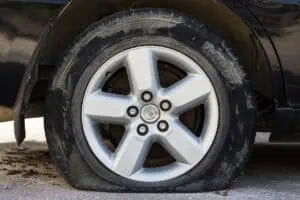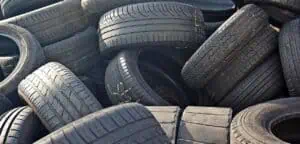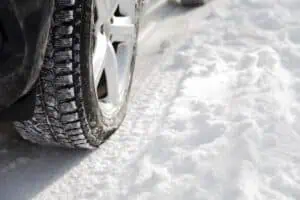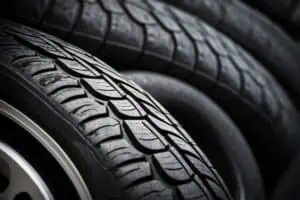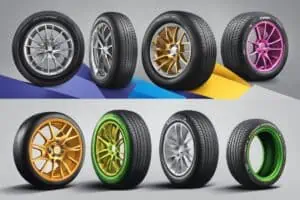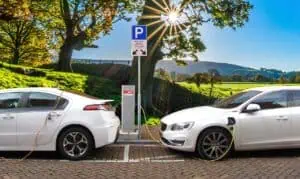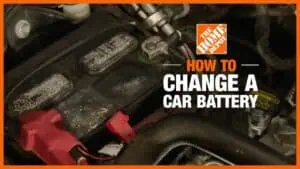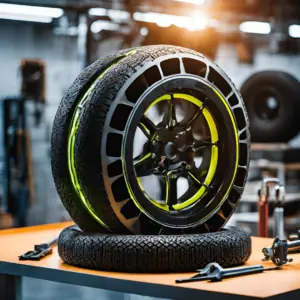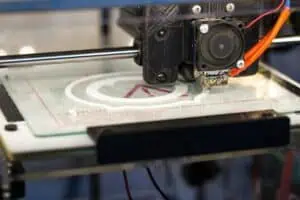It’s quite common to cruise down the highway when suddenly, you feel that dreaded thump-thump-thump of a flat tire. Here’s where it gets really weird. Instead of pulling over and calling for roadside assistance, you simply keep driving. Sound like science fiction? Well with self regenerating treads it’s possible. One of the foreseeable future of tire technology is here, and it’s nothing short of revolutionary.
In the world of automotive innovation, self-regenerating treads are making waves, promising to transform our driving experience and redefine what we expect from our tires. This cutting-edge technology is not just about convenience; it’s about safety, sustainability, and pushing the boundaries of what’s possible in tire design.
The Concept of Self-Regenerating Treads
At its core, self-regenerating tread technology is exactly what it sounds like – tire treads that can repair and replenish themselves. But how does this sci-fi-sounding concept work in reality?
Goodyear’s ReCharge Concept: A Glimpse into the Future
Goodyear, a titan in the tire industry, has unveiled a concept that’s turning heads and challenging our perceptions of tire maintenance. The ReCharge concept tire is not just a tire; it’s a glimpse into a future where flat tires and regular replacements might become a thing of the past. www.designboom.com
The Magic Behind the Tread
The secret sauce of Goodyear’s ReCharge lies in its core – a biodegradable tread compound that can regenerate itself. This compound is made from a biological material reinforced with fibers inspired by one of nature’s toughest materials: spider silk. This combination results in a tread that’s not only durable but also 100% biodegradable, addressing both performance and environmental concerns in one fell swoop. www.tiretechnologyinternational.com
Recharging Your Tires: A New Paradigm
Here’s where things get really interesting. The ReCharge concept introduces the idea of “recharging” your tires. Instead of replacing your entire tire when the tread wears down, you simply insert a new capsule containing the liquid compound into the center of the wheel. This process radically simplifies tire maintenance and opens up a world of possibilities for customization.
Customization: Tires That Adapt to You
One of the most exciting aspects of this technology is its potential for personalization. Thanks to artificial intelligence, the ReCharge concept could create a driver profile and customize the liquid compound blend to suit individual driving styles, locations, and even seasons. Imagine having tires that automatically adjust their composition for your summer road trip and then readjust for your winter commute – all without you having to lift a finger.
The Structure: More Than Just Tread
The innovative tread compound is supported by a lightweight, non-pneumatic frame. This tall and narrow shape eliminates the need for pressure maintenance and renders punctures a non-issue. It’s a design that promises to be thin, robust, and low-maintenance – a trifecta of tire perfection.
Environmental Impact: Driving Towards Sustainability
In an age where environmental concerns are at the forefront of innovation, self-regenerating treads offer a promising solution. The biodegradable nature of the compound addresses the significant issue of tire waste. Moreover, the extended lifespan of these tires means fewer replacements, reducing the overall environmental impact of tire production and disposal.
Current Innovations: Bridging the Gap
While Goodyear’s ReCharge remains a concept, other tire manufacturers are already implementing technologies that bridge the gap between traditional tires and the self-regenerating dream.
Michelin’s Selfseal Technology: A Step in the Right Direction
Michelin has introduced Selfseal technology, a current market solution that, while not fully self-regenerating, takes a significant step towards reducing the impact of punctures. This technology uses a sealant permanently installed inside the tire to surround puncturing objects and fill the hole, preventing air leakage and maintaining pressure.
The Selfseal technology is designed to seal 90% of tread punctures up to ¼ inch in diameter, significantly reducing the chances of being stranded due to a flat tire. It’s an environmentally friendly option that doesn’t impact rolling resistance or other tire performance aspects. www.michelinman.com
Real-World Applications
Michelin’s Selfseal technology is already making its way into the real world. It’s available on several vehicle models, including:
- 2020+ Cadillac CT5: MICHELIN® Primacy™ Tour A/S with Selfseal
- 2020+ Ford Explorer: MICHELIN® Primacy™ All Season with Selfseal®
- 2017+ Chevy Bolt: MICHELIN® Energy™ Saver A/S with Selfseal®
- 2021+ Chrysler Pacifica: MICHELIN® Premier® A/S with Selfseal®
This real-world implementation shows that the industry is moving steadily towards more resilient and self-maintaining tire technologies.
The Road Ahead: Challenges and Opportunities
While the concept of self-regenerating treads is exciting, it’s not without its challenges. The technology is still in its infancy, and there are several hurdles to overcome before we see widespread adoption.
Technical Challenges
Developing a compound that can truly regenerate while maintaining the performance characteristics of traditional tires is no small feat. Engineers must ensure that the regenerated tread maintains its grip, durability, and safety features throughout its lifespan.
Regulatory Hurdles
As with any new automotive technology, self-regenerating treads will need to pass rigorous safety tests and meet regulatory standards before they can hit the market. This process can be time-consuming and may require new testing methodologies to be developed.
Consumer Adoption
Convincing consumers to adopt a radically new tire technology will require education and possibly a shift in how we think about tire ownership and maintenance. The industry will need to demonstrate the long-term cost savings and environmental benefits to encourage widespread acceptance.
Infrastructure Considerations
The implementation of self-regenerating tread technology may require changes to existing tire service infrastructure. Tire shops and mechanics will need to be trained in the new technology, and new equipment may be necessary for maintenance and “recharging.”
The Bigger Picture: Beyond Tires
The development of self-regenerating treads is part of a larger trend in the automotive industry towards more sustainable, intelligent, and low-maintenance vehicles. This technology aligns with the push towards electric and autonomous vehicles, where reducing maintenance and improving efficiency are key goals.
As we move towards a future of smart cities and interconnected transportation systems, tires that can adapt and maintain themselves could play a crucial role in ensuring the safety and efficiency of our roads.
Self Regenerating Treads Helps You Keep On Driving
Self-regenerating treads represent more than just a new tire technology; they symbolize a shift in how we think about vehicle maintenance and sustainability. As we stand on the brink of this tire revolution, it’s clear that the road ahead is paved with innovation.
From Goodyear’s visionary ReCharge concept to Michelin’s practical Selfseal technology, the tire industry is rolling towards a future where flat tires are a rarity, and tire changes are as simple as inserting a new capsule. This future promises not just convenience, but a significant leap forward in safety, performance, and environmental responsibility.
As we watch this technology develop, one thing is certain: the way we think about tires is changing. The days of regularly scheduled tire replacements and roadside flats may soon be in our rearview mirror. Instead, we’re moving towards a world where our tires are as adaptive and resilient as the vehicles they support.
So, the next time you hit the road, take a moment to appreciate the humble tire beneath you. It may not be long before it’s not just carrying you forward, but actively adapting to keep you safe and comfortable, mile after mile. The future of tire technology is here, and it’s regenerating right before our eyes.


